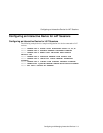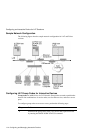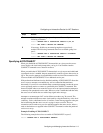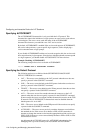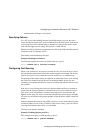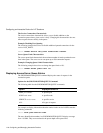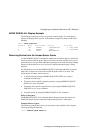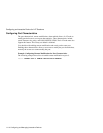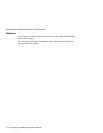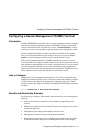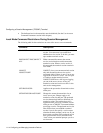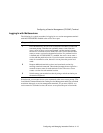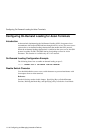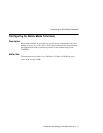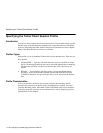
Configuring and Managing Interactive Devices 11-11
Configuring an Interactive Device for Telnet Sessions
Configuring an Interactive Device for Telnet Sessions
Introduction
User-oriented characteristics, such as forward switch and VERIFICATION and the
various Telnet session characteristics (see Configuring Individual Telnet Client
Session Characteristics in this chapter), are not included in this example. Also, this
example assumes that the port and device characteristics match. (See the Matching the
Port and Device Characteristics section in Chapter 9.)
The following are variables that you should substitute with the appropriate value:
• Access server port number
• FLOW CONTROL (you cannot enable DSR FLOW CONTROL when the
DSRLOGOUT characteristic is enabled, as described in FLOW CONTROL
Types)
Reference
For a description of each command, refer to the
Network Access Server Command
Reference
.
Note
Not all commands can be combined on one line.
Configuring a Device on Port 6 for Internet Hosts Example
The following example shows a sample configuration of a device connected to Internet
hosts, which is illustrated in the Sample Network Configuration section in this chapter:
Local> CHANGE PORT 6 ACCESS LOCAL AUTOBAUD ENABLED
Local> CHANGE PORT 6 BREAK LOCAL DEDICATED NONE
Local> CHANGE PORT 6 DEFAULT PROTOCOL TELNET
Local> CHANGE PORT 6 DSRLOGOUT ENABLED FLOW CONTROL XON
Local> CHANGE PORT 6 INACTIVITY LOGOUT ENABLED INTERRUPTS
DISABLED
Local> CHANGE PORT 6 LIMITED VIEW DISABLED PASSWORD DISABLED
Local> CHANGE PORT 6 TELNET CLIENT PROFILE CHARACTER
To connect to any host available on the TCP/IP network, the user enters the
CONNECT, OPEN, or TELNET command.
Enable DSRLOGOUT or LONGBREAK LOGOUT (see Specifying DSRLOGOUT
and Specifying LONGBREAK LOGOUT in Chapter 9) if you wish the access server
to log out the port when the device is turned off. Note that the access server, device,
and device cable must support the DSR signal if you use DSRLOGOUT.



